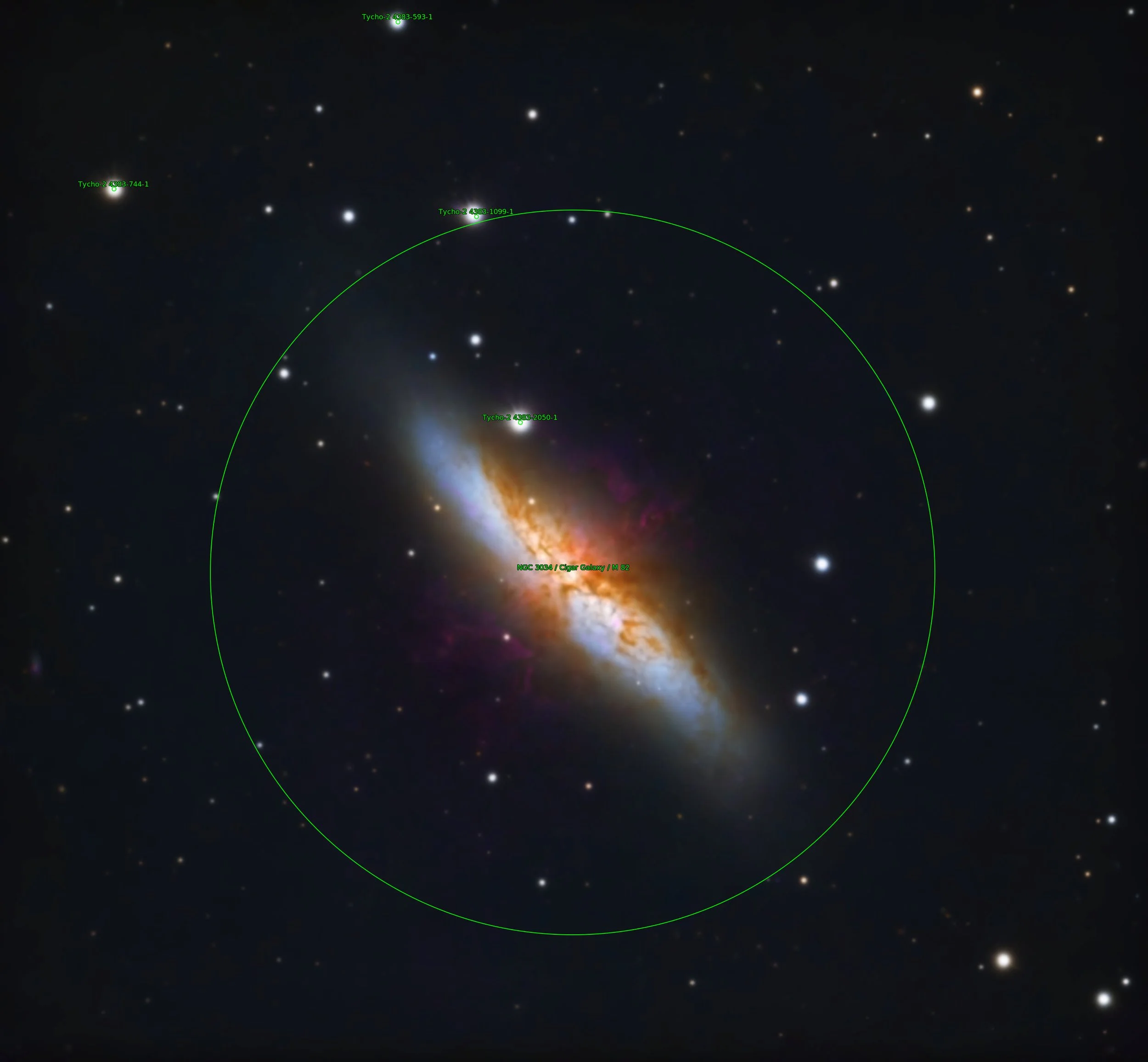M82 : The Cigar Galaxy
M82, also known as the Cigar Galaxy, is an irregular dwarf galaxy located approximately 12 million light-years away in the constellation Ursa Major. It is distinguished by its elongated shape and is often classified as a starburst galaxy due to its high star formation rate. It is primarily observed in infrared light, as it is obscured by dust in visible light.
M82 was discovered by the astronomer Johann Elert Bode in 1774. Bode recognized it as a nebula, which was a common term at the time used to describe various astronomical objects that resembled cloudy patches in the sky.
M82 interacts with its neighboring galaxy, M81, which affects its morphology and star formation activity. It is a popular target for amateur astronomers and astrophotographers due to its unusual shape and brightness.
M82 is listed in the New General Catalogue (NGC) as NGC 3034, and it was included in Charles Messier's catalog as Messier 82 in 1781. Messier's catalog aimed to identify and locate nebulae and star clusters to help prevent confusion with comets.
Early Observations : Initially classified as a spiral galaxy, M82 was later recognized for its peculiar morphology, characterized by a cigar-like shape. This led to further interest in its structure and star formation activity.
In the latter half of the 20th century, advancements in astronomical technology, such as radio and infrared observations, significantly enhanced our understanding of M82. It became known as a starburst galaxy due to its high rate of star formation, driven by the interactions with its neighboring galaxy M81.
Observing M82:
Best Time to Observe : M82 is best viewed during the winter months in the northern hemisphere, particularly from October to March when it is higher in the sky.
Location : Look for M82 in the constellation Ursa Major, which is also home to the Big Dipper asterism. M82 is located just north of M81, another notable galaxy.
Equipment :
Naked Eye : M82 is not visible to the naked eye due to its faintness, but it can often be spotted with binoculars or telescopes.
Binoculars : A good pair of binoculars (7x50 or larger) can show M82 as a small, elongated smudge.
Telescope : For better views, a telescope with at least 4 inches of aperture will reveal its cigar-like shape and some details in its structure.
Light Pollution : Try to find a dark sky location away from city lights for the best viewing experience.
Set up
Celestron C8 telescope on EQ6 R Pro mount
ASI533 MC Pro camera for imaging
ASI220 mini for guiding via OAG Celestron
UV/IR Cut filter
Control via ASIAIR PLUS
The session
M82 was taken in April 2025
40 frames, 300” each
Total integration : 3 hours 20”
Processing
Calibration, Alignment and Stacking with Siril
Processing with Pixinsight
Procedure via PixInsight :
Dynamic Crop
Gradient correction
Image Solver
SPCC
BlurX Terminator (Correct only)
StarX Terminator to remove the stars
Stars Strech via SetiAstro
Starless image stretched with EZ Suite
NoiseX Terminator on both images
SCNR to remove the green noise on both images
Luminance extraction on the starless
Masks & curve transformation on the starless
Pixel Math to bring the stars back
Noise reduction via NoiseX (Just a hair)
Guide excerpt
Astrometry : Annotated version
Clear Sky !
Leave a comment




